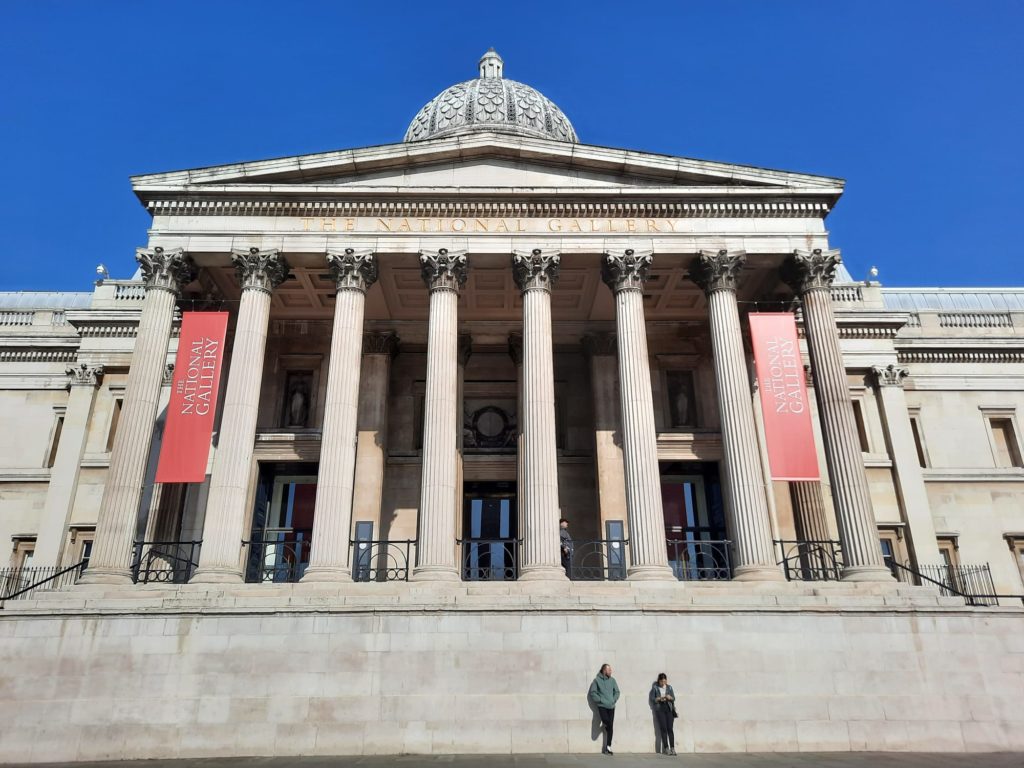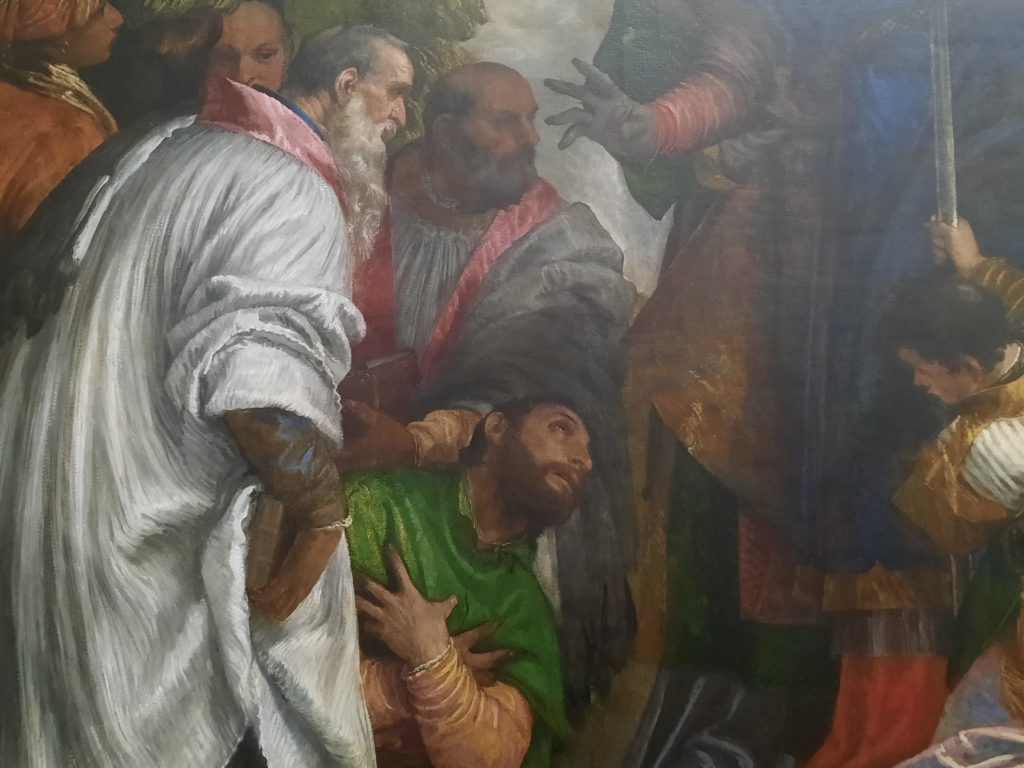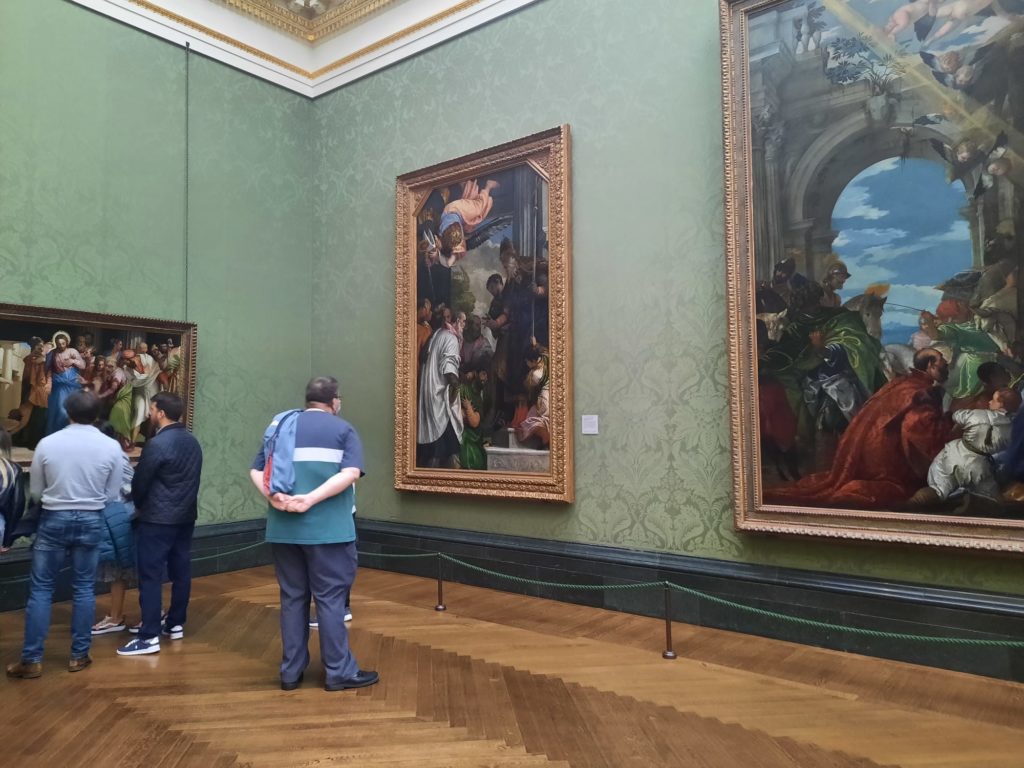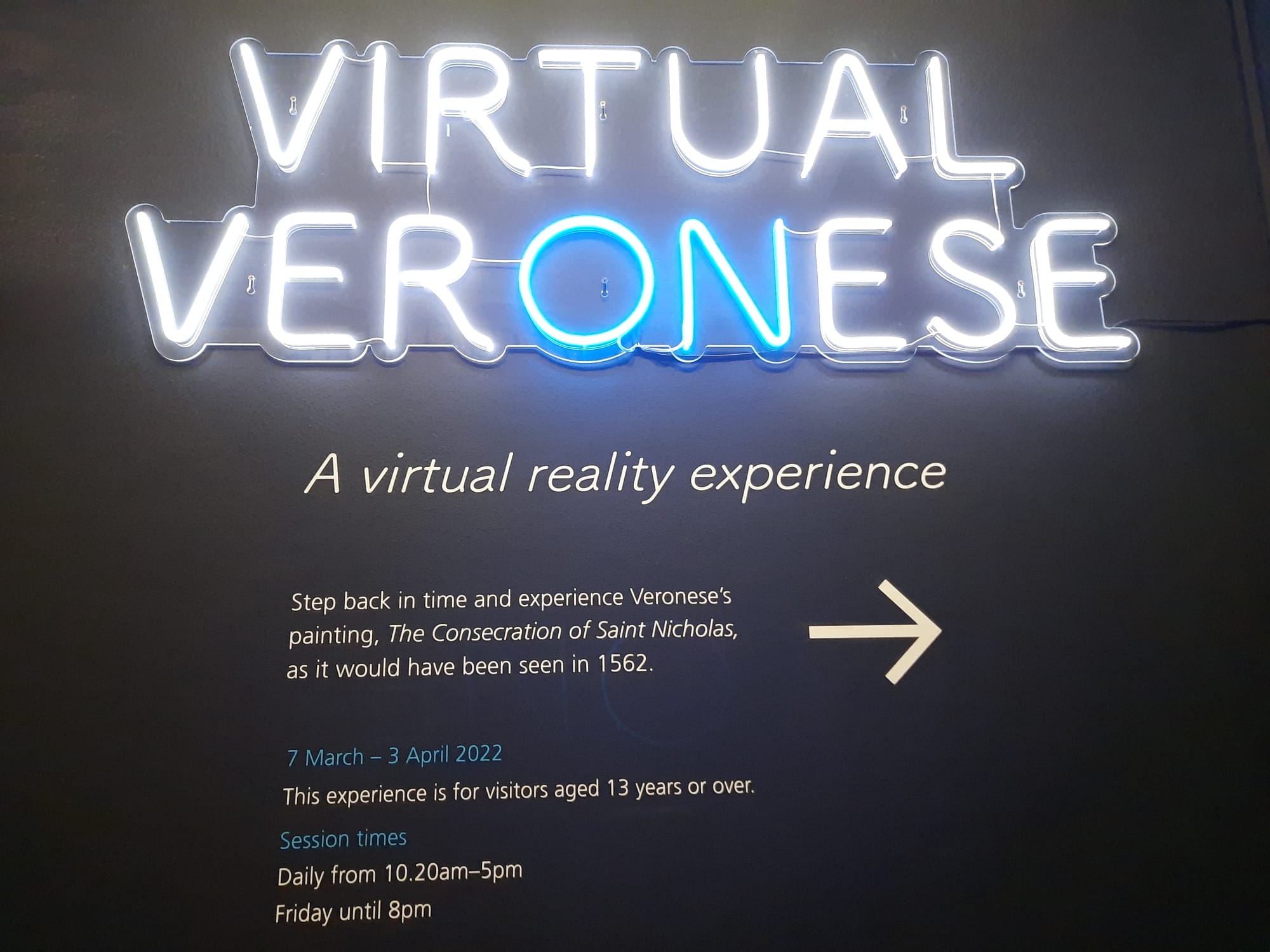Virtual Veronese – National Gallery, London
A review of virtual reality experience Virtual Veronese at the National Gallery. A high-tech way to recontextualise what is otherwise one of many fine paintings in the Gallery’s collection.

Art Experienced Virtually
In the last couple of years I have noticed an upswing in the number of virtual reality experiences on offer. Perhaps it’s just that I have started to pay attention. But since December 2020 I’ve been able to see VR theatre (Petrichor); opera (Current, Rising); a documentary (Awavena); and have also seen VR games and tours within the Alice: Curiouser & Curiouser and Van Gogh: The Immersive Experience exhibitions.
In many ways, virtual reality is still in its infancy. The two main constraints are the cost/complexity of the equipment, and the space required. I’ve seen different approaches to overcoming these constraints. For example very often, a VR experience involves staying seated. Less dynamic use of the technology, but you don’t have to worry about space for visitors to move around safely. Or the risk of them damaging themselves or their headsets. At the other end of the spectrum, the Royal Opera House went all out by dedicating a large space to Current, Rising, which featured several kilograms of equipment per person, the trade off being that each visitor had a VR avatar so could move around relatively freely.
Virtual Veronese, at the National Gallery until 3 April 2022, is a sort of middle ground. Visitors wear just the VR headsets, and have space in which they can move around. There are no avatars, however, so each visitor needs their own space so they don’t bump into each other. Therefore this experience is limited to 3 people at a time, for a total of 9 per hour. With all pre-booked slots now taken (more on this later) and waiting for a no-show a potentially lengthy process, your main concern might be trying to get in at all.

The Consecration of St Nicholas
The star of the show is a 1561 painting, The Consecration of St Nicholas, by Paolo Veronese. It has been part of the National Gallery’s collection almost since the institution’s foundation. It hung originally in a chapel in the church of San Benedetto al Po, near Mantua, Italy. And hung there in fact until it ‘was removed’ during the Napoleonic Wars, coming onto the art market shortly after. The National Gallery leaves the background to the painting’s acquisition there.
What presumably made this painting a good candidate for the National Gallery and partners StoryFutures and Focal Point VR is that we know exactly where it hung. And that I’m assuming the church is still in original enough condition to make it easy to capture its likeness for the VR world. Visitors (after a quick health and safety briefing) then have a choice. They can either hear from former National Gallery curator (and curator of this exhibition) Dr. Rebecca Gill, or travel back in time to watch a conversation between two monks at the time of the painting’s commission. I chose the latter and my partner chose the former; both seem to be interesting, illuminating different aspects of the experience as you would expect.
So once you don your headset, you have about 8 minutes in the VR world. I wandered about a small diamond-shaped space, listening to the monks discuss the painting as a smart bit of sucking up to the Vatican in the context of the Roman Inquisition. My partner listened to Dr. Gill pointing out notable features of the chapel, its frescoes and so on. It’s certainly impressive seeing the painting back in situ – the star of the show rather than one among many. You can almost feel the cool, incense-laden atmosphere of the peaceful chapel.

Final Thoughts
So in the end this is an interesting experience which is only hampered by practicalities. Nine people an hour is not many. And the National Gallery are finding that, because entry is free, there are a lot of no-shows amongst the pre-booked ticket holders. It thus becomes an exercise in crowd control to manage walk-ups. Perhaps linked to this time constraint, unlike Sensing the Unseen: Step Into Gossaert’s ‘Adoration’ where you experienced a painting through technology and then had a moment almost alone with the real deal to contemplate it, the Veronese remains in its usual spot upstairs. My guess is this is to keep people moving through, but it seems a little incongruous to have to go back upstairs and seek it out in the galleries.
If you fancy your chances waiting for a slot as a walk-up, then I recommend this experience as it was fun. I am always interested to see the different uses to which this technology can be put, and recontextualising a devotional painting is one which really makes sense. Maybe I’m the only one wondering if it raises questions of whether artworks are better off in their original vs. institutional settings – quite likely as this is an area of personal interest for me. Anyway, if you aren’t in London or don’t want to wait around on the off chance, you can get a sense of what Virtual Veronese is like here. Or, like my last image above, you can always just go and see the actual painting in person.
Salterton Arts Review’s rating: 3.5/5
Virtual Veronese on until 3 April 2022
Trending
If you see this after your page is loaded completely, leafletJS files are missing.

